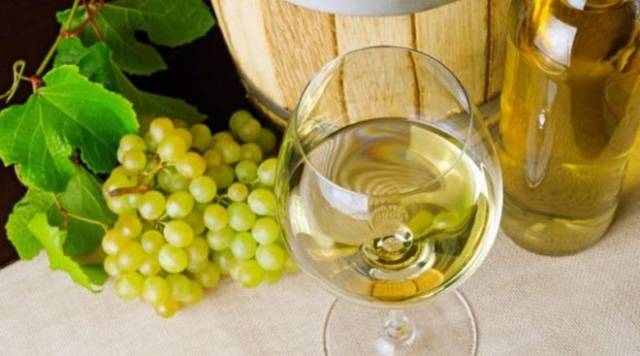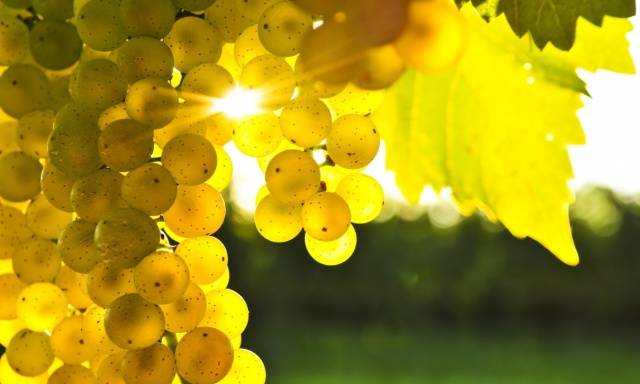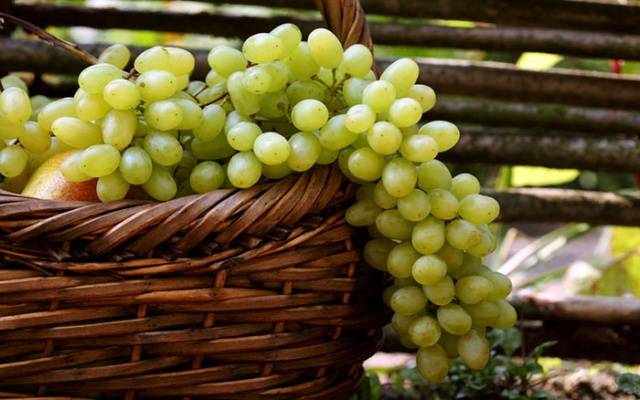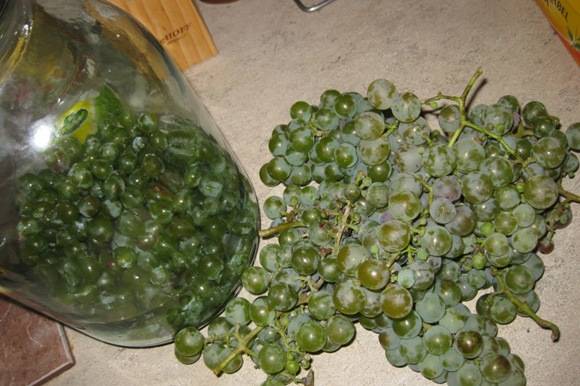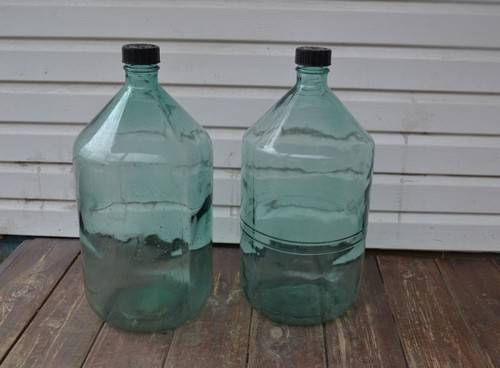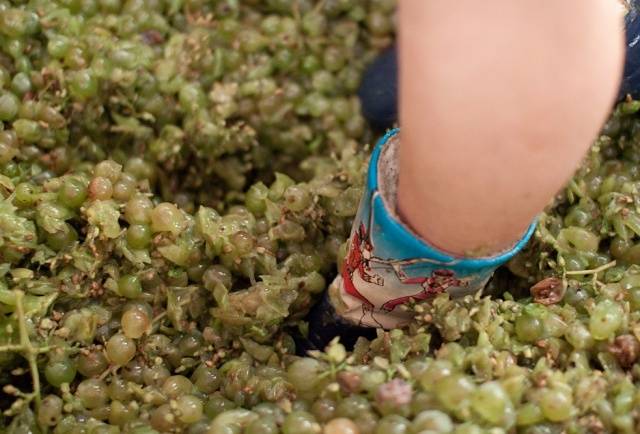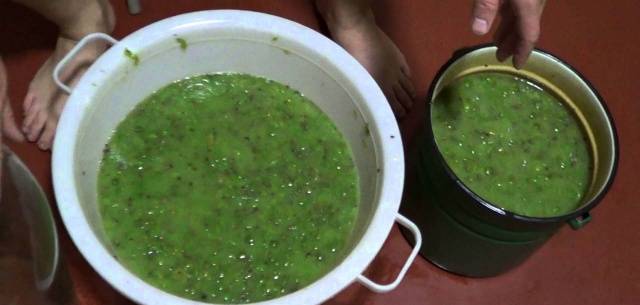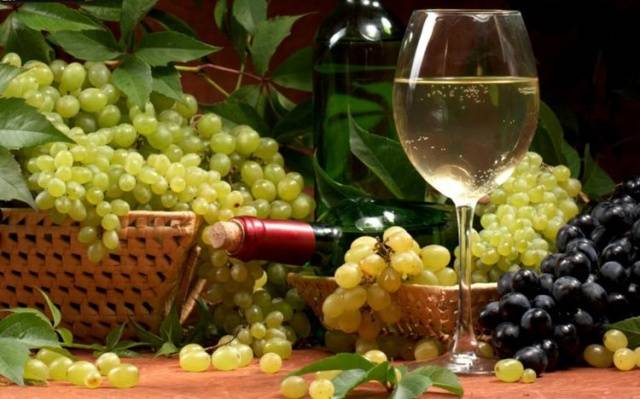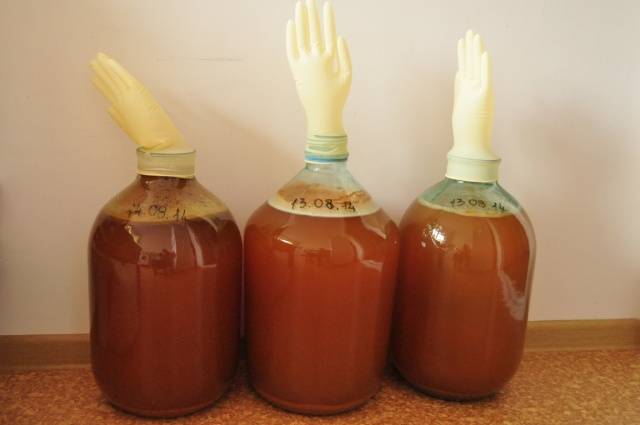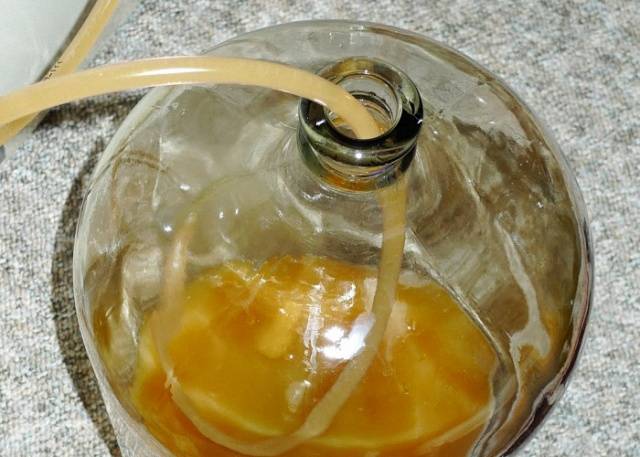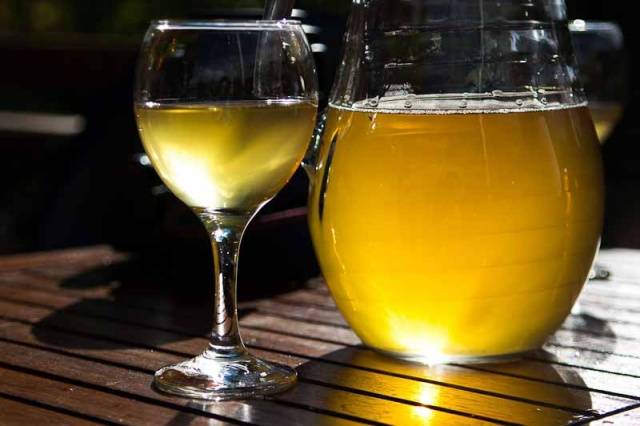Content
Few would argue that homemade wine is in no way inferior to most store wines, and often even surpasses them. Indeed, among the rich assortment of wines in the store, it is difficult for a layman to distinguish real wine from numerous counterfeits. And homemade wine, if prepared correctly, is unlikely to harm your health. And if you still have a plot with grapes, then you should definitely try to create a homemade wine delicacy from it, which will warm you on cold winter evenings.
This article will focus on making homemade wine from green grapes. It produces a delicate and very light white wine.
The best green grape varieties suitable for winemaking are currently considered to be:
- White Muscat;
- Riesling;
- Aligote;
- Firstborn of Magarach;
- Chardonnay;
- Feteasca;
- Sylvaner.
But even if you do not know the name of the grape variety that grows with you, do not be upset. You can make high-quality wine from almost any grape, the main thing is that it contains at least a little sweetness. But if your grapes are not ripe enough and their acidity reduces cheekbones, even in this case, there are tricks for getting a decent-tasting homemade wine.
Harvesting and preparation of raw materials
It is best to use ripe grapes for making wine. In unripe berries, there is too much acid and little sugar, and in overripe fruits of grapes, vinegar fermentation can begin, which will subsequently turn all the squeezed juice into vinegar.
Unfortunately, in many regions of Russia in some years grapes do not have time to ripen to the required condition. In these cases, a technique is used that allows you to reduce the acidity of the grape juice. To do this, it is diluted with water in an amount of not more than 500 ml per one liter of the obtained juice.
Keep in mind that some dilution of grape juice with water always degrades the taste of the finished wine, so use this technique as a last resort only if the juice from your grapes is so sour that it tingles your tongue. In all other cases, it is better to correct the acidity of the juice by increasing the amount of sugar added in the production of wine.
It is also undesirable to use fruits that have fallen to the ground for making wine, since they can give the finished drink an unpleasant aftertaste.
In general, it is advisable to pick grapes in sunny and dry weather. In addition, you need to decide on the timing of the grape harvest so that there would be no rain 3-4 days before. This is necessary in order to preserve the bloom with yeast fungi, which play a fundamental role in the fermentation process, on the grapes. It is for the same reason that grapes are never washed before being processed into wine.
Harvested berries must be used within two to three days after harvest.
But the bulkhead of berries is a more than necessary procedure. It is imperative to remove any rotting, damaged, moldy or unripe fruit. Leaves and twigs, as a rule, are also removed. Although in some recipes, some of the branches are retained so that the wine has a more pronounced taste of the variety to which the grapes belong.
Requirements for glassware for winemaking
It is very important to understand that for making wine, all containers must be perfectly clean and completely dry. This is necessary in order not to introduce into the future wine various unsuitable microorganisms that can completely spoil its taste. If possible, buckets, barrels and bottles are even smoked with sulfur, as is done in industrial production. But at least they must be treated with boiling water or high temperatures and dried.
Try not to use containers in which dairy products were previously stored for making wine, since it is very difficult to completely wash them from traces of the vital activity of lactic bacteria.
Also important is the material of the dishes with which the juice and wine come into contact.
The best materials to use in the wine making process are ceramics, glass and wood. It is advisable to use plastic only for food, since the alcohol formed during the fermentation of wine is able to come into contact with plastic dishes and form compounds that are poisonous to humans. Even for the pressure of grapes and mixing the juice, only wooden devices are used. You can also do this with clean hands.
Juicing and the beginning of fermentation
Having placed the sorted grapes in a container of a suitable volume, they must be crushed to obtain juice. If the volume of berries is not very large, this procedure is best done manually. This way, you will not damage the bones, which contain a bitter substance, and avoid splashing the juice. For large quantities of berries (more than 10 liters), you can use a wooden crush to knead them.
As a result, you will have a pulp (pulp with seeds and skin) floating in the grape juice. The container with juice and pulp must be covered with a clean cloth to protect future wine from insects. Then place it in a dark place with a constant temperature of at least + 18 ° С, or even warmer, up to + 27 ° С.
The juice should begin to ferment the very next day, and this process is hard to miss - a frothy head of pulp forms on the surface. Several times a day it is necessary to stir the juice, dissolving the frothy cap, using a wooden stick or simply by hand. After 3-4 days, the pulp should lighten a little, a peculiar aroma will appear and a slight hiss will be heard - this is carbon dioxide coming out. At this stage, the juice must be squeezed out of the pulp. The upper foamy part is carefully removed with a plastic colander and squeezed thoroughly. The pulp can then be thrown away.
The remaining juice is filtered several times through several layers of gauze or other suitable cloth until only clear and light juice remains. Multiple straining not only helps to get rid of excess particles, but also saturates the juice with oxygen, which allows the wine yeast to start working immediately.
Sugar addition and active fermentation
Why is it good homemade grape wine, so this is because, apart from the fruits and sugar themselves, it does not require anything for its manufacture. But the required amount of sugar strongly depends on the grape variety, more precisely, on its sugar content. Most recipes use 2 to 3 kg of sugar for 10 kg of grapes. But experienced winemakers advise adding sugar in portions, waiting for it to be completely processed during the wine fermentation process. That is, initially, approximately 30% of sugar from the amount prescribed in the recipe is added to the juice purified from the pulp.3-4 days after the start of active fermentation, the future wine is tasted, and if it seems sour, it means that the sugar has already been processed and you need to add it.
How to do it right? It is necessary to pour 1-2 liters of fermenting juice into a separate container, and stir the required amount of sugar in it. You need to proceed from the fact that about 50 grams of sugar is added at a time to 1 liter of the total amount of juice. Then pour the resulting syrup into the juice again and ferment again. This procedure must be repeated 3-4 more times during the first three weeks of fermentation of the future wine.
And what is done with the juice initially after the first portion of sugar has been added to it. It is poured into special containers for fermentation - usually glass jars or bottles with sealed lids play their role.
After that, a water seal is installed on the container with juice. It is needed for the free release of the resulting carbon dioxide and at the same time protecting it from interaction with oxygen. Most often at home, instead of a water seal, a sterile rubber glove is used, puncturing a small hole in one of the fingers. It is put on the neck of a jar or bottle and firmly and hermetically fixed on it, coated with wax or plasticine from the outside.
For good fermentation, the container with the future wine is placed in a room with a temperature of at least + 15 ° C. For wine made from green grapes, the optimal temperature conditions will be + 16 ° C + 22 ° C.
Under these conditions, homemade wine can ferment for 30 to 60 days.
The fact is that dead bacteria accumulate in the sediment, and if this is not done, then the wine can later turn bitter.
Maturation of wine
The signal for the end of wine fermentation is the lowering of the glove. A loose sediment should form at the bottom and the wine must be drained without touching it. To do this, it is placed in a higher place in advance and one end of a transparent tube is placed in a container with wine, without bringing it to a sediment closer than 3 cm. Place the other end in a clean and dry bottle where you will pour the wine. At this point, the wine must be tasted and, if necessary, sugar must be added one last time.
If the addition of sugar is not necessary, then bottles with spilled wine are tightly sealed with corks and placed for maturation in a room with a temperature of + 5 ° C to + 16 ° C. The most important thing is that when young wine matures, there are no daily temperature jumps. The stage of wine maturation itself can last from 40 to 360 days. During the ripening process, if you see the accumulation of sediment at the bottom of the bottle, you need to pour the wine into another bowl using the same straw. This must be done until the sediment practically stops forming.
The wine can be considered completely ready. It can be stored under suitable conditions for up to 5 years.
The process of making homemade wine may seem daunting just the first time. But if you do all the procedures correctly at least once, you should not have any difficulties in the future.
